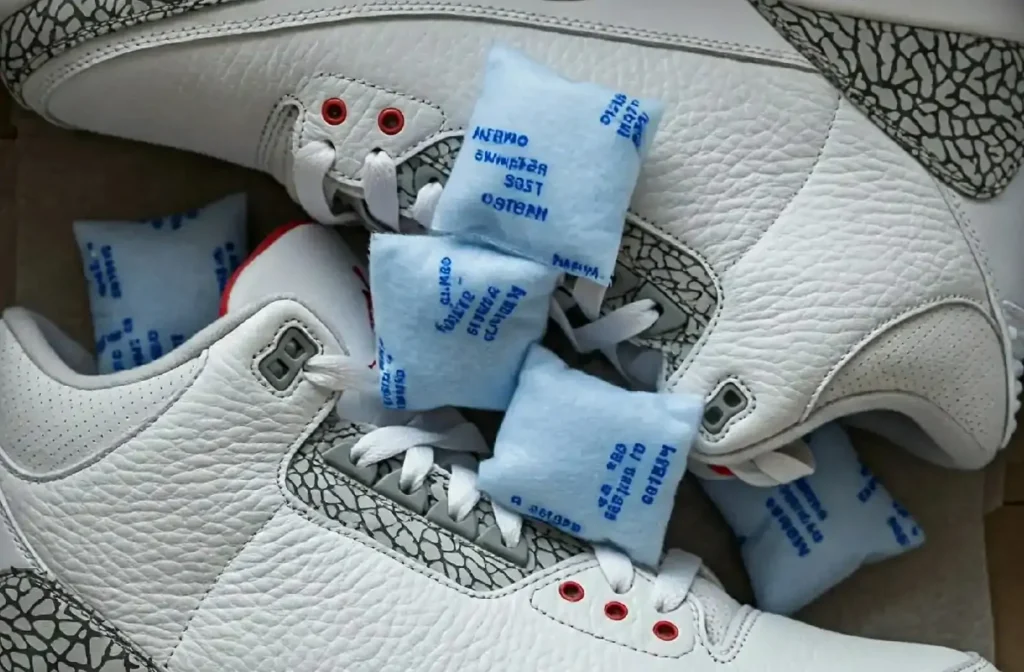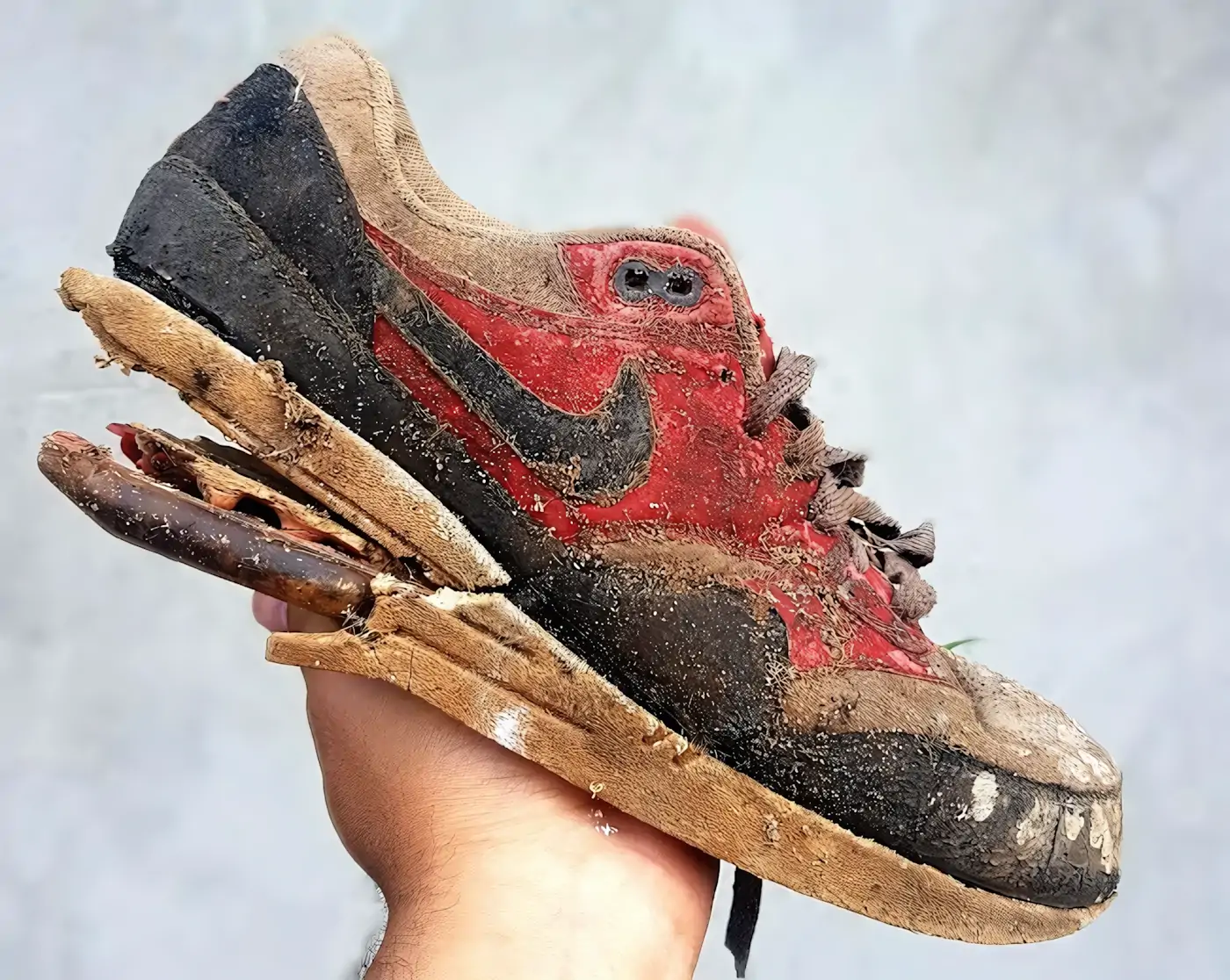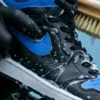If you’re a sneakerhead, you’ve probably experienced the gut-punch of opening a box of that dope pair of kicks you’ve been saving for years, only to find them crumbling, with the sole disintegrating or the material just falling apart. It feels like some kind of dark magic, but it’s not. The culprit has a name: hydrolysis. And yeah, it’s as scary as it sounds. But chill, we’re gonna break it all down in a clear, laid-back way so you know why this happens, which materials are most at risk, and—most importantly—how to keep your precious sneakers from turning to dust.
What’s Hydrolysis? The Science Behind “Sneakers Turning to Dust”
Hydrolysis is a chemical process where water molecules mess with certain materials, breaking down their molecular bonds. In sneakers, it mainly hits polyurethane (PU), a super common material in soles and other shoe parts. When PU gets exposed to moisture in the air or damp environments, water molecules attack the material’s chemical bonds, weakening its structure and eventually causing it to fall apart.
Think of polyurethane like a sandcastle. Hydrolysis is the ocean wave that slowly chips away at the towers and walls until the whole thing collapses. For sneakers, that means crumbly soles, cracks, or even soles completely detaching from the upper (the top part of the shoe).
Why Does This Happen? The Shelf Life of Materials
Everything’s got an expiration date, and sneaker materials are no exception. Polyurethane, while durable and flexible, isn’t built to last forever. Over time, especially if you store your kicks in bad conditions (like damp spots or places with extreme temperature swings), hydrolysis speeds up.
Here’s a wild fact: hydrolysis doesn’t just hit old sneakers. It can wreck kicks that have never even touched pavement but have been sitting in a box for years. That’s why those Air Max or Jordans you’ve been stashing for a decade might be in rough shape, even if they’ve never seen the street.
Which Materials Are Most Prone to Hydrolysis?
Not all sneaker materials get hit by hydrolysis. Here’s a rundown of the main culprits and the champs that hold up better:
Materials Prone to Hydrolysis:
- Polyurethane (PU): The main villain. Found in tons of sneaker soles, especially from the ‘90s and 2000s.
- EVA (Ethylene Vinyl Acetate): Less prone than PU, but still at risk in extreme conditions.
- Glues and Adhesives: Lots of glues used in sneaker manufacturing can break down over time, causing parts to separate.
Materials Resistant to Hydrolysis:
- Rubber: Materials like vulcanized rubber are way more durable and resist hydrolysis (like the rubber soles on Vans Old Skool, for example).
- Leather: If properly cared for, leather lasts way longer without breaking down.
- Modern Synthetic Fabrics: Materials like Nike’s Flyknit, Adidas’ Primeknit, and Puma’s EvoKnit are less likely to have this issue.
Which Sneaker Models Are Most Affected?
Some iconic models are notorious for hydrolysis, especially those with polyurethane soles. Here are some of the “famous” ones that might crumble if you don’t take care of them:
- Nike Air Max 1, 95, 97, and other Air Max models: The Air Max technology often uses polyurethane in the midsole, making it vulnerable to hydrolysis.
- Air Jordans (especially ‘90s models): Tons of classic Jordans, like the Air Jordan 3, 4, 5, and 6, use PU in their soles.
- Adidas Boost (in rare cases): While Boost is more resistant, it’s not completely immune to hydrolysis, especially in harsh conditions.
- Old-School Basketball Sneakers: A lot of basketball kicks from the ‘80s and ‘90s used polyurethane, making them prime candidates for disintegration.
How to Prevent Hydrolysis and Save Your Sneakers

Now that you know what causes hydrolysis, let’s get to the good stuff: how to stop your sneakers from turning to dust. Here are some practical tips:
1. Store in a Dry, Cool Place
Moisture is your sneakers’ worst enemy. Store your kicks in a dry spot, far away from bathrooms, basements, or any damp areas. A closet in your bedroom or a climate-controlled space is perfect.
2. Use Silica Gel
Those little silica gel packets that come with your sneakers aren’t just for show. They soak up moisture and keep the inside of the box dry. Toss a few packets inside your kicks and in the box where you store them.
Wanna keep your favorite kicks from crumbling too soon? Silica gel is your best buddy! Those tiny packets (actually porous silicon dioxide granules) are like moisture-sucking superheroes. Through a process called adsorption, they grab water molecules from the air, stopping moisture from wrecking your sneaker soles and slowing down that dreaded hydrolysis. So, when you stash your kicks, throw some silica gel packets in the box or closet—your drip will thank you! 🔥👟
3. Avoid Extreme Temperatures
Super hot or freezing cold spots can speed up material breakdown. Don’t store your sneakers near heaters, radiators, or in areas that get direct sunlight for long periods.
4. Wear Them Occasionally
It might sound weird, but rocking your sneakers every now and then can actually extend their life. The movement and flexing of the sole can keep the material from hardening and cracking.
5. Invest in Professional Preservation
If you’ve got a rare or super valuable pair of sneakers, consider taking them to a sneaker restoration expert. They can apply products that slow down hydrolysis and help keep your kicks in top shape.
6. Avoid Overwashing
Washing your sneakers too often, especially in a washing machine, can speed up material breakdown. Stick to hand-cleaning with sneaker-specific products.
What If My Sneakers Are Already Crumbling? Is There a Fix?
Sadly, once hydrolysis kicks in, there’s not much you can do to reverse it. But depending on the damage, you might have some options:
- Repainting and Repair: If only parts of the sneaker are affected, a restoration expert can rebuild or touch up the damaged areas.
- Sole Swap: In some cases, you can replace the sole with a new one, especially if the upper is still in good shape. Or go for a hybrid sneaker, pairing the upper with a different sole.
- Turn It Into Art: If your kicks are too far gone, why not turn them into a display piece? Lots of collectors use old sneakers as decor.
Conclusion: Take Good Care of Your Sneakers
Hydrolysis is a natural process, but that doesn’t mean you have to say goodbye to your favorite kicks too soon. With the right care, you can stretch the life of your sneakers and keep them looking fresh for years. Remember: proper storage, occasional wear, and a little TLC go a long way.
So, next time you crack open the box of that Air Max or Jordan pair you’ve been saving, we hope they’re still ready to rock. And if they’re not, at least now you know why it happened and how to prevent it in the future. After all, sneakers are more than just shoes—they’re stories, memories, and sometimes straight-up works of art. They deserve all the love you can give them.
FAQ: Questions and Answers About Hydrolysis in Sneakers
Why are my sneakers crumbling even though I never wore them?
Ugh, the classic tragedy of sneakers turning to dust without ever hitting the streets! It’s because of hydrolysis, a chemical process that breaks down materials (especially polyurethane) when they’re exposed to moisture in the air. Even if they’re boxed up, your kicks aren’t safe from time and bad storage conditions. It’s like they’re aging in slow motion until—poof!
What is hydrolysis, and why does it mess with sneakers?
Hydrolysis is a chemical reaction where water molecules attack the bonds in materials like polyurethane, causing them to break down. In sneakers, it mainly hits the soles and glued parts. It’s like your kicks are fighting a losing battle against moisture, and sadly, water always wins.
Which materials are most likely to get hit by hydrolysis?
The main bad guy is polyurethane (PU), super common in the soles of older sneakers. EVA can also take a hit, but it’s tougher. Materials like vulcanized rubber and leather are way more durable and less likely to have this problem. So, if you want kicks that last forever, check the materials!
Which sneaker models are most affected by hydrolysis?
Some classic models are infamous for hydrolysis, especially those with polyurethane soles. The main ones to watch out for are:
- Nike Air Max 1, 95, and 97
- Air Jordans from the ‘90s (like Jordan 3, 4, 5, and 6)
- Old-school basketball sneakers
If you’ve got any of these, keep an eye on them!
How can I stop my sneakers from getting hit by hydrolysis?
Here are some tips to save your kicks:
- Store them in a dry, cool place.
- Use silica gel packets in the box to soak up moisture.
- Avoid extreme temperatures (no heaters or direct sunlight).
- Wear your sneakers every now and then to keep the materials from hardening.
With these steps, your kicks have a better shot at surviving the test of time!
Can I fix sneakers that are already crumbling?
It depends on how bad the damage is! If only some parts are affected, a sneaker restoration expert can rebuild or touch up the damaged areas. In worse cases, you might need to replace the sole. But if your kicks are totally toast, there’s not much hope. Maybe turn them into a cool decor piece?
Can new sneakers get hit by hydrolysis too?
Yep, but it’s rarer. Hydrolysis usually hits older sneakers or ones stored in bad conditions for years. If you leave brand-new kicks in a damp basement for a decade, though, they could still get wrecked. So, don’t forget your sneakers in some musty corner, okay?
Is there a product to prevent hydrolysis?
There’s no miracle product to stop hydrolysis completely, but you can slow it down with some smart moves:
- Use silica gel to control moisture.
- Apply sneaker preservation products.
- Keep your kicks in a climate-controlled, low-humidity spot.
And, of course, rock your sneakers every once in a while to keep them “alive”!



